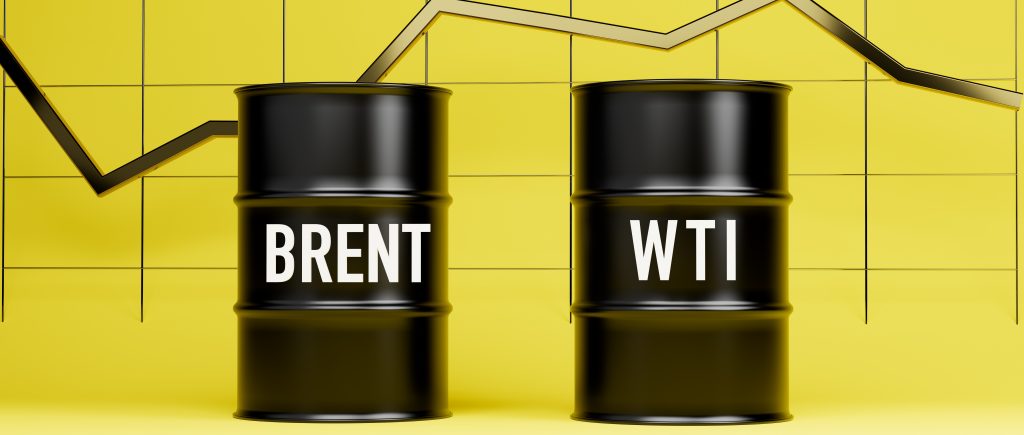As the summer of 2025 draws to a close, oil markets are grappling with persistent downward momentum, with Brent crude hovering at $66.17 per barrel—a dip of 0.79% from its prior close—while West Texas Intermediate (WTI) lingers at $63.32 per barrel, down 1.00%. This year’s tepid performance, marked by a rebound from earlier lows in the $50s, underscores a delicate balance of overflowing supply, waning demand, and flickering geopolitical sparks. Despite occasional uplifts from tight diesel stocks, the overarching narrative points to volatility driven by production boosts that outpace consumption, raising the specter of an oil glut in the months ahead.
At the heart of the price erosion lies a ramp-up in global supply, spearheaded by OPEC+ nations unwinding their output curbs. The cartel, encompassing heavyweights like Saudi Arabia and Russia, has signaled incremental increases, including a 547,000 barrels per day (bpd) hike slated for September, following earlier adjustments of 411,000 bpd in May and 548,000 bpd in August. June alone saw OPEC+ output swell by 2.9 million bpd year-over-year, pushing worldwide totals to 105.6 million bpd, with Saudi Arabia leading the charge.
Compliance hiccups from members like Iraq, Kazakhstan, and the UAE add complexity, as overproduction occasionally undermines the group’s cohesion. Meanwhile, non-OPEC players—led by the U.S., Brazil, Canada, and Guyana—are fueling the fire, with American shale poised to shatter records at 13.59 million bpd thanks to technological efficiencies, even as drilling slows under price pressure. Forecasts peg global supply growth at 2.1 million bpd for the year, eclipsing demand and ballooning inventories, as evidenced by a 73.9 million-barrel build in May, largely in Chinese crude and U.S. gas liquids.
Demand, the flip side of the equation, is sputtering forward at a snail’s pace, clocking in at a mere 700,000 bpd growth for 2025—the slowest non-pandemic rate since 2009. Emerging economies, particularly China, are the weak link, with second-quarter expansion stalling at 550,000 bpd year-over-year amid a shift to electric vehicles and LNG trucks, potentially capping demand at 16 million bpd by 2027. Beijing’s stimulus efforts targeting 7% GDP growth have yet to ignite imports significantly, though expanded quotas for independent refiners to 258 million tons hint at latent potential.
Bright spots emerge in India and other non-OECD Asian markets, shouldering much of the projected 0.8 million bpd global uptick. Broader economic headwinds, including delayed U.S. Federal Reserve rate cuts into late 2025 due to sticky inflation, are dampening industrial and transportation fuel needs worldwide.
Geopolitical undercurrents offer sporadic support but fall short of reversing the bearish tide. U.S. sanction threats against Russian oil purchasers, including India, sparked a brief July rally, lifting Brent 2.3% to $70 per barrel alongside a U.S.-EU trade pact and tightened timelines for Russia-Ukraine negotiations. Russia’s 10% slice of global supply faces fresh U.S. restrictions from January 2025, which could crimp exports. Yet, de-escalating Middle East tensions, such as around Iran’s nuclear ambitions, contributed to June’s slide.
The Trump administration’s push for affordable energy to tame inflation, coupled with tariff risks, injects further uncertainty. Refining dynamics provide a counterweight: Margins dipped in June but rebounded on diesel strength, with global runs peaking at 85.4 million bpd this summer amid seasonal demand for travel and power. Low diesel inventories have buoyed Brent by 15% from May troughs.
Looking ahead, expert outlooks paint a dim picture of sustained weakness. The U.S. Energy Information Administration eyes Brent at $69 per barrel for 2025, slipping to $58 in 2026, blaming stockpile swells and demand lethargy.
Goldman Sachs trims its view to $60 this year and $56 next, citing OPEC+ expansions. Barclays dials back to $66 for 2025, while J.P. Morgan holds at $73 but flags sub-$70 risks by December. From a technical standpoint, Brent’s breach of $68 support accelerates toward $66, with $60 in sight if surpluses persist, though backwardation in spreads signals short-term tightness amid quarterly balances averaging 1.74 million bpd excesses.
In essence, August 12’s oil landscape is a tale of abundance clashing with restraint, where supply exuberance from OPEC+ and shale giants overshadows sluggish demand and muted geopolitics. Without major disruptions, prices may drift lower, urging traders to watch cartel discipline and key economic indicators from powerhouses like China and the U.S. for any game-changing shifts.

 Noor Trends News, Technical Analysis, Educational Tools and Recommendations
Noor Trends News, Technical Analysis, Educational Tools and Recommendations




